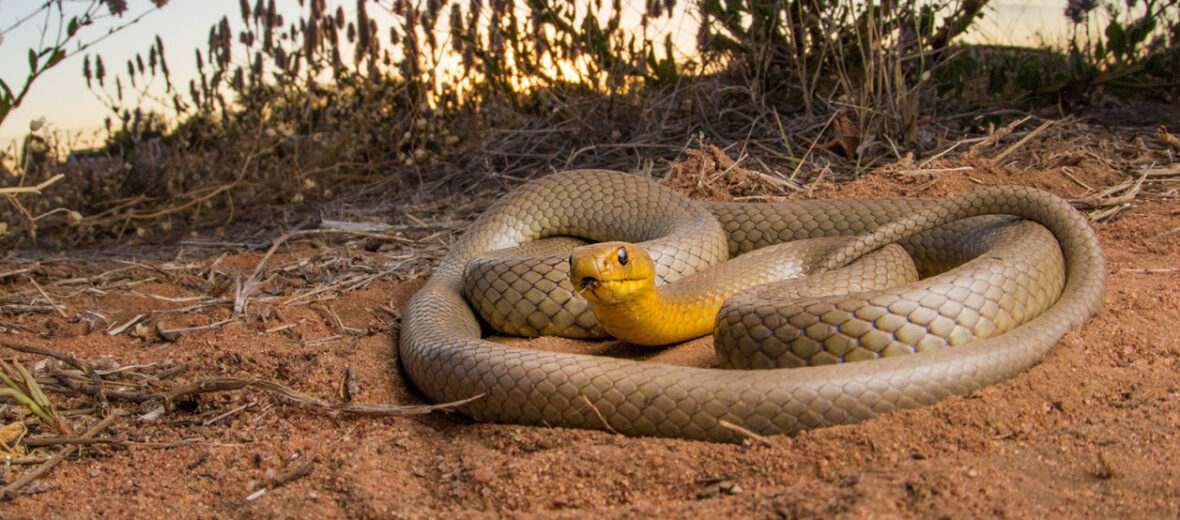
The western brown snake, or gwardar, is a species of very fast and highly venomous elapid snake native to western Australia. The name gwardar means “go the long way around” in the Aboriginal language. Presumably, this name is a wise advisory to keep clear of this snake. Western brown snakes inhabit arid and semi-arid areas, dry forests, grasslands, wooded savannas, and scrublands.
First the Stats…
Scientific name: Pseudonaja nuchalis
Weight: Up to 9 lbs.
Length: Up to 6 feet
Lifespan: Up to 10 years
Now on to the Facts!
1.) These snakes are able to lighten or darken their color based on the need to stay cooler or attempt to warm themselves. Lighter coloration will reflect heat and darker will absorb it.
2.) The western brown snake is diurnal (active during the day).
3.) Western browns primary prey are rodents, frogs, lizards, birds, snakes, and even eggs.
4.) They tend to hide in abandoned underground burrows, large cracks in the soil, between rocks, and fallen timber.
5.) When cornered, these snakes will raise their heads above the ground and form an “S” shape with their elevated body and open their mouths to a gape, while hissing. These snakes can be very defensive if threatened, but typically tend to scurry rather than stay and fight.
But wait, there’s more on the western brown snake!
6.) The main predators of the western browns are mulga snakes and large birds of prey.
7.) Due to their short fangs, a bite is not always felt. Its venom contains neurotoxins, nephrotoxins, and a procoagulant, although humans are not usually affected by the neurotoxins.
Did you know…?
Human symptoms of a western brown snake bite are headache, nausea/vomiting, abdominal pain, severe coagulopathy (blood clotting), and sometimes kidney damage. Paralysis can also occur in cats and dogs.
8.) Mating season takes place from spring – mid-summer. Males fight by entangling their bodies and swinging their heads at each other; as well as biting each other to establish dominance.
9.) Females lay between 12 – 38 eggs, 6 – 9 weeks after copulation. Eggs hatch after 60 – 80 days.
10.) More males are produced than females, regardless of incubation temperature.
Now a Short Western Brown Snake Video!
Also, check out the Critter Science YouTube channel. Videos added frequently!
Want to suggest a critter for me to write about? Let me know here.



